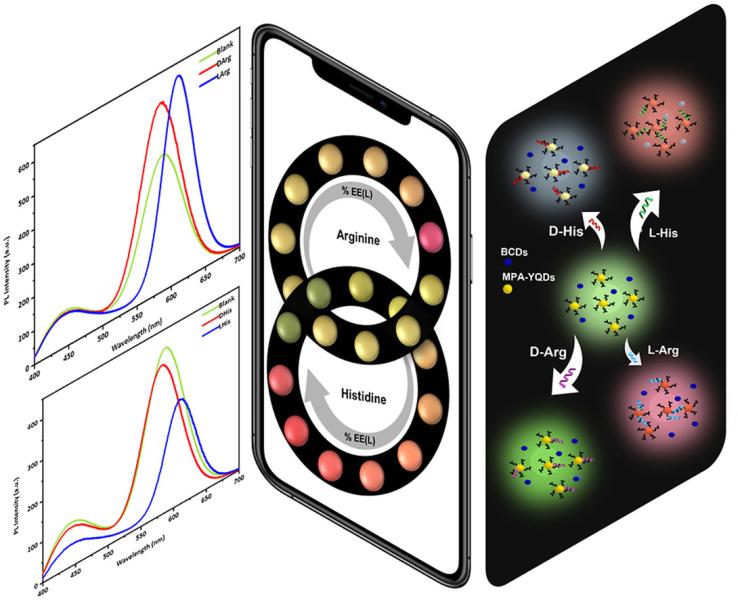- English
- فارسی
Toward visual chiral recognition of amino acids using a wide-range color tonality ratiometric nanoprobe

NafisehFahimi-Kashani, ZahraJafar-Nezhad Ivrigh, RaziehMorad, ZaharJamshidi, Mohammad RezaHormozi-Nezhad
Chiral recognition has long been a challenging issue to deal with in biological systems, drug design and food authentication. Implementing nanoparticle-based probes with intrinsic or induced chirality in this field has addressed several issues concerning sensitivity, reliability, rapidness and the cost of chiral sensing platforms. Yet, research into chiral nanoprobes that can be used for visual monitoring of chiral substances is still in its infancy. As part of this study, a visual chiral recognition platform has been developed in which a combination of blue-emitting carbon dots (BCDs) and mercaptopropionic acid-capped CdTe quantum dots (MPA-QDs) with inherent chiroptical activity were employed for enantiomeric detection. The ratiometric probe displayed unique fluorescence response patterns in the presence of arginine (Arg) and histidine (His) enantiomers. Upon addition of l-amino acids, successive enhancement and quenching of emission intensity as well as a red-shift in emission wavelength of MPA-QDs were observed. The emission color of the nanoprobe changed from green to pink-red and green to brick-red red by increasing the concentration of L-Arg and L-His, respectively.
In contrast, their d-amino acid equivalents have a negligible influence on the emission color and fluorescence signal of the developed nanoprobe. Due to the enantioselective vibrant color changes of the nanoprobe, RGB analysis was applied for the determination of enantiomeric excess (ee) in racemic mixture with satisfactory results, allowing smartphone-based onsite visual evaluation of ee (%). Circular dichroism, lifetime, size distribution and ζ-potential measurements were employed to study the chiroselective responses. First-principle calculations were also carried out with density functional theory (DFT) to confirm the experimental observation. Furthermore, chiroselective response patterns of the ratiometric nanoprobe were manipulated to construct a logic gate system mimicking AND, OR, and INHIBIT functions. The capability of the proposed chiral platform in visual monitoring of the fraction of enantiomers in racemic mixtures has a great potential for rapid and onsite visual discrimination of chiral compounds in the field of clinical diagnostics and drug analysis.
